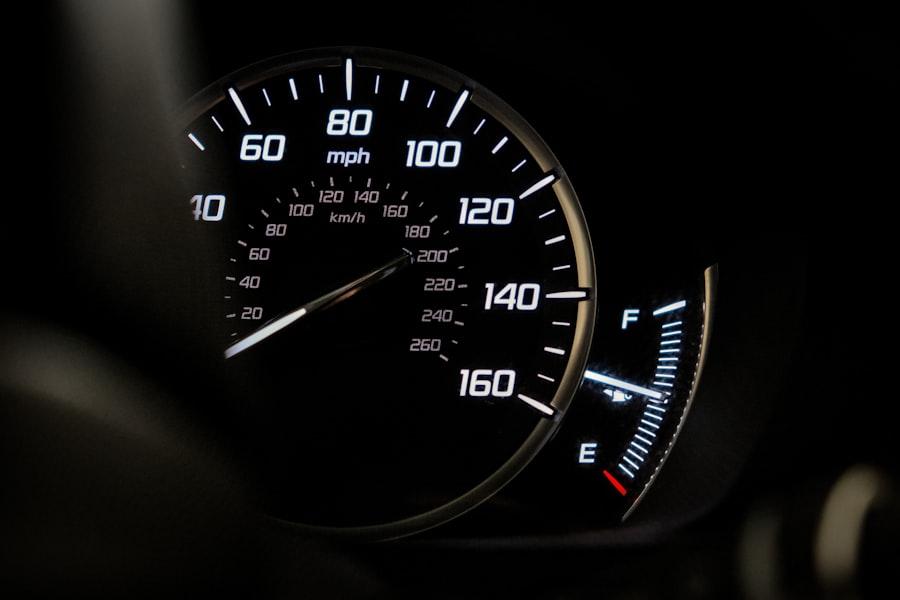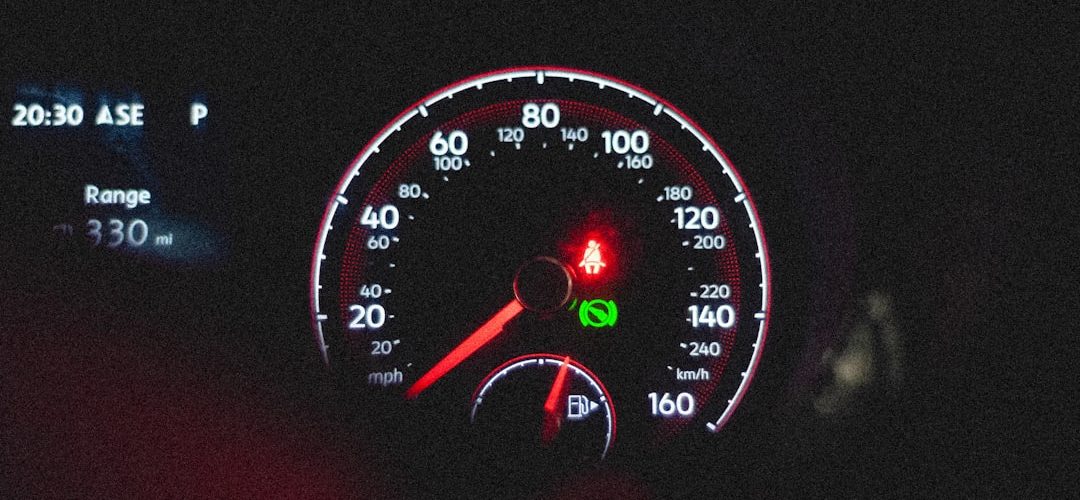As I delve into the world of web development, one of the most critical aspects that I have come to appreciate is the importance of website speed. In today’s fast-paced digital environment, users expect instant access to information. A website that takes too long to load can lead to frustration and ultimately drive potential visitors away.
Research has shown that even a one-second delay in loading time can result in a significant drop in user satisfaction and conversion rates.
This realization has made me acutely aware of how crucial it is to prioritize speed when designing and maintaining a website.
Moreover, website speed is not just about user experience; it also plays a vital role in search engine optimization (SEO).
Search engines like Google consider page speed as a ranking factor, meaning that a faster website is more likely to rank higher in search results. This connection between speed and SEO has motivated me to continuously seek ways to enhance my website’s performance. By understanding the importance of website speed, I have been able to make informed decisions that not only improve user experience but also boost my site’s visibility in search engines.
Table of Contents
ToggleKey Takeaways
- Website speed is crucial for user experience and search engine rankings
- Choose a hosting provider with reliable and fast servers
- Optimize images by compressing and resizing them for faster loading
- Minimize HTTP requests by combining files and using CSS sprites
- Use caching plugins to store static files and reduce server load
Choosing the Right Hosting Provider
When it comes to ensuring optimal website speed, selecting the right hosting provider is paramount. I have learned that the quality of hosting can significantly impact loading times. Shared hosting, while cost-effective, often leads to slower speeds due to resource sharing among multiple websites.
In contrast, opting for dedicated or VPS hosting can provide the necessary resources and performance enhancements that my site requires. This decision has been instrumental in achieving faster loading times and a more reliable user experience. Additionally, I have discovered that the geographical location of the hosting server can also affect website speed.
Choosing a hosting provider with data centers close to my target audience can reduce latency and improve loading times. I have made it a point to research various hosting options, weighing factors such as server performance, uptime guarantees, and customer support. By investing time in selecting the right hosting provider, I have laid a solid foundation for my website’s speed and overall performance.
Optimizing Images for Faster Loading

Images are often the heaviest elements on a webpage, and I have found that optimizing them is crucial for improving loading times. One of the first steps I took was to compress images without sacrificing quality. Various tools and plugins are available that allow me to reduce file sizes significantly, which in turn helps my pages load faster.
By ensuring that images are appropriately sized for their display dimensions, I have been able to eliminate unnecessary data that would otherwise slow down my site. In addition to compression, I have also learned about the importance of using the right file formats. For instance, JPEGs are ideal for photographs due to their balance of quality and file size, while PNGs work better for images requiring transparency.
By carefully selecting the appropriate format for each image, I have been able to further enhance my website’s performance. These image optimization techniques have not only improved loading times but have also contributed to a more visually appealing site.
Minimizing HTTP Requests
| Metrics | Value |
|---|---|
| Total number of HTTP requests | 25 |
| Number of external CSS files | 3 |
| Number of external JavaScript files | 4 |
| Number of images | 10 |
Another strategy I have employed to boost my website’s speed is minimizing HTTP requests. Each element on a webpage—be it images, scripts, or stylesheets—requires an individual request to the server. As I analyzed my site, I realized that reducing the number of these requests could lead to significant improvements in loading times.
One effective approach I adopted was combining multiple CSS and JavaScript files into single files. This consolidation reduces the number of requests made during page loading, resulting in a faster experience for users. Furthermore, I have also focused on simplifying my design by limiting the use of external resources.
While third-party scripts can add functionality, they often come with additional loading times. By carefully evaluating which scripts are essential and which can be eliminated or replaced with more efficient alternatives, I have managed to streamline my site’s performance. This process of minimizing HTTP requests has proven to be an effective way to enhance overall speed and efficiency.
Utilizing Caching Plugins
Caching is another powerful tool I have discovered for improving website speed. By utilizing caching plugins, I can store static versions of my web pages, which reduces the need for repeated database queries and server processing. This means that when a user visits my site, they are served a cached version rather than having to wait for the server to generate a new page each time.
Implementing caching has led to remarkable improvements in loading times, especially for returning visitors. I have experimented with various caching plugins available for my content management system (CMS) and found that they offer different features tailored to specific needs. Some plugins allow me to set expiration times for cached files, while others provide options for minifying HTML and CSS automatically.
By taking advantage of these features, I have been able to optimize my site further and ensure that users enjoy a seamless browsing experience.
Implementing Lazy Loading for Images and Videos

In my quest for faster loading times, I stumbled upon the concept of lazy loading for images and videos. This technique allows me to defer the loading of non-visible elements until they are needed—specifically when they come into the user’s viewport. By implementing lazy loading, I have significantly reduced initial loading times, as only the content visible on the screen is loaded first.
This approach not only enhances speed but also improves user engagement. Users are more likely to stay on my site if they don’t experience long wait times when navigating through pages filled with images and videos. Additionally, lazy loading helps conserve bandwidth for users on mobile devices or slower connections, making my site more accessible to a broader audience.
Overall, this technique has been a game-changer in optimizing my website’s performance.
Minimizing JavaScript and CSS Files
As I continued my journey toward optimizing website speed, I realized that minimizing JavaScript and CSS files was another crucial step. Large files can slow down page rendering times, so I began by identifying any unnecessary code or libraries that could be removed or replaced with lighter alternatives. By streamlining these files, I was able to reduce their size significantly.
Moreover, I took advantage of minification tools that automatically remove whitespace and comments from my code without affecting functionality. This process not only reduces file sizes but also improves loading times by allowing browsers to process files more quickly. By focusing on minimizing JavaScript and CSS files, I have created a more efficient website that loads faster and provides a better user experience.
Using Content Delivery Networks (CDNs)
In my pursuit of enhanced website speed, I discovered the benefits of using Content Delivery Networks (CDNs). A CDN is a network of servers distributed across various geographical locations that store cached versions of my website’s content. When users access my site, they are served content from the nearest server rather than from my primary hosting server.
This reduces latency and significantly improves loading times for users around the world. Implementing a CDN has allowed me to reach a global audience more effectively while ensuring consistent performance regardless of location. Additionally, CDNs often provide added security features such as DDoS protection and SSL certificates, which further enhance my site’s reliability and safety.
By leveraging the power of CDNs, I have taken a significant step toward optimizing my website’s speed and overall performance.
Removing Unused Elements and Plugins
As I continued refining my website’s performance, I realized that removing unused elements and plugins was essential for maintaining speed. Over time, it’s easy for websites to accumulate unnecessary features or plugins that can bloat code and slow down loading times. By conducting regular audits of my site’s elements, I was able to identify what was truly necessary and what could be eliminated.
This process not only streamlined my code but also simplified maintenance moving forward. With fewer plugins installed, there are fewer potential points of failure or security vulnerabilities to manage. Additionally, removing unused elements has contributed to a cleaner design and improved user experience as visitors navigate through my site more efficiently.
Prioritizing Above-the-Fold Content
In my efforts to enhance website speed, I learned about the importance of prioritizing above-the-fold content—the portion of a webpage visible without scrolling. By ensuring that this content loads quickly, I can create a positive first impression for users who visit my site. To achieve this, I focused on optimizing critical resources such as images and scripts needed for rendering above-the-fold content.
I also implemented techniques like asynchronous loading for non-essential scripts so that they do not block the rendering of visible content. This approach allows users to engage with my site immediately while other elements load in the background. By prioritizing above-the-fold content, I have improved perceived loading times and increased user satisfaction.
Testing and Monitoring Website Speed Regularly
Finally, one of the most important lessons I’ve learned in optimizing website speed is the necessity of regular testing and monitoring. Speed optimization is not a one-time task; it requires ongoing attention as new content is added or changes are made to the site. By utilizing various tools available online, such as Google PageSpeed Insights or GTmetrix, I can assess my site’s performance regularly.
These tools provide valuable insights into areas where improvements can be made and help me track progress over time. Additionally, monitoring user feedback allows me to identify any issues related to speed that may arise unexpectedly. By committing to regular testing and monitoring, I ensure that my website remains fast and efficient in delivering an exceptional user experience.
In conclusion, optimizing website speed is an ongoing journey that requires careful consideration of various factors—from choosing the right hosting provider to implementing advanced techniques like lazy loading and CDNs. Through diligent effort and continuous learning, I have been able to create a faster, more efficient website that meets user expectations while enhancing its visibility in search engines. As technology evolves and user demands change, I remain committed to refining my approach to ensure optimal performance for all who visit my site.
If you’re looking to speed up your website using Elementor and implement essential tips, you may also want to consider focusing on content strategy for good SEO. This article on content strategy and SEO via social media posting provides valuable insights on how to optimize your website’s content for better search engine rankings. Additionally, if you’re in the roofing industry and looking to improve your online presence, this article on roofing company WordPress websites offers tips and tricks specifically tailored to your industry. And don’t forget to check out the top 5 must-have WordPress plugins in this article here for additional tools to enhance your website’s performance.
FAQs
What is Elementor?
Elementor is a popular drag-and-drop page builder plugin for WordPress. It allows users to create and customize their websites without needing to know any code.
Why is it important to speed up your website?
A fast website is crucial for user experience and search engine optimization. Slow loading times can lead to higher bounce rates and lower search engine rankings.
How can Elementor help speed up a website?
Elementor offers various optimization features such as lazy loading, minification of CSS and JavaScript, and image optimization. These can help reduce the loading time of a website.
What are some essential tips for speeding up a website using Elementor?
Some essential tips for speeding up a website using Elementor include optimizing images, using a caching plugin, minimizing the use of external scripts, and choosing a reliable web hosting provider.
How can image optimization help speed up a website?
Image optimization involves reducing the file size of images without compromising their quality. This can significantly reduce the loading time of a website, especially for pages with a lot of images.
What is lazy loading and how does it help with website speed?
Lazy loading is a technique that defers the loading of non-essential resources, such as images, until they are needed. This can help reduce the initial loading time of a webpage, especially for pages with a lot of images.
What is minification and how does it help with website speed?
Minification is the process of removing unnecessary characters from code, such as white spaces and comments, without changing its functionality. This can help reduce the file size of CSS and JavaScript files, leading to faster loading times.
Why is choosing a reliable web hosting provider important for website speed?
A reliable web hosting provider can ensure that a website has sufficient server resources and a fast network connection, which are crucial for fast loading times. A slow or unreliable web host can significantly impact a website’s speed.




